TIDT384 February 2024
3.1 Switching
Figure 3-16 through Figure 3-9 show the switch node voltages of the buck converter at various test conditions.
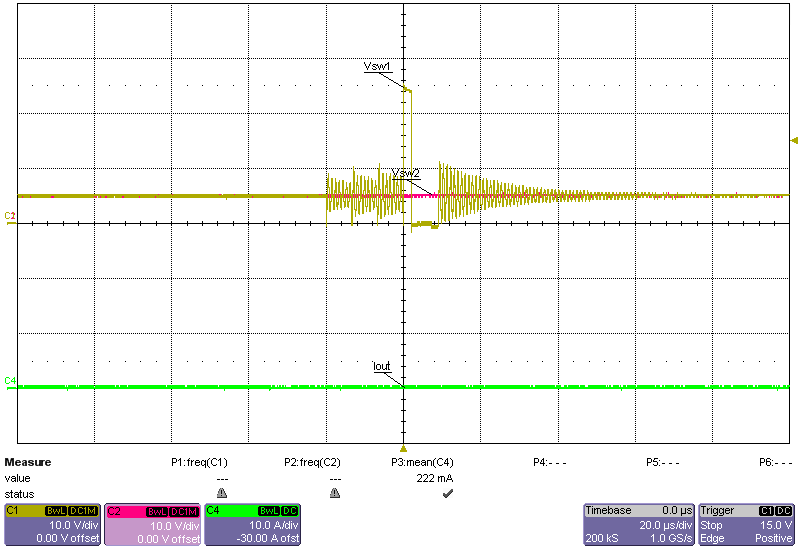 Figure 3-1 Switch Node Voltages, 24V
Input, No Load, PFM Mode
Figure 3-1 Switch Node Voltages, 24V
Input, No Load, PFM Mode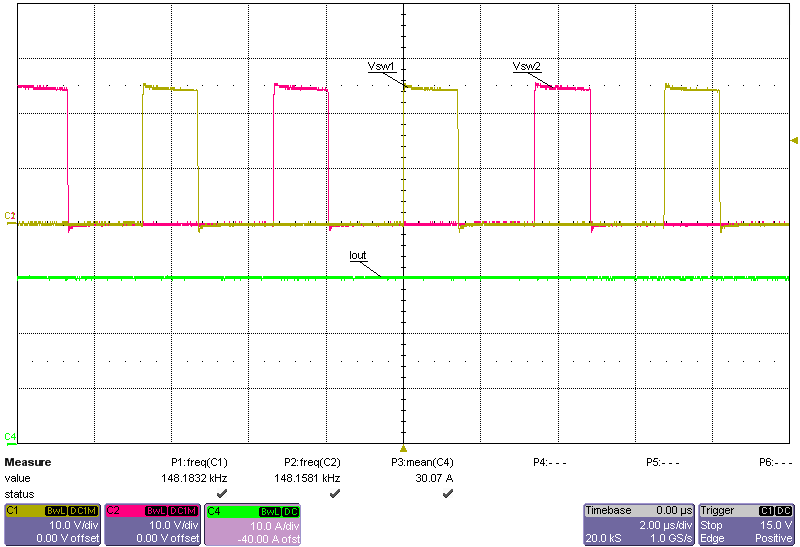 Figure 3-3 Switch Node Voltages, 24V
Input, 30A Load
Figure 3-3 Switch Node Voltages, 24V
Input, 30A Load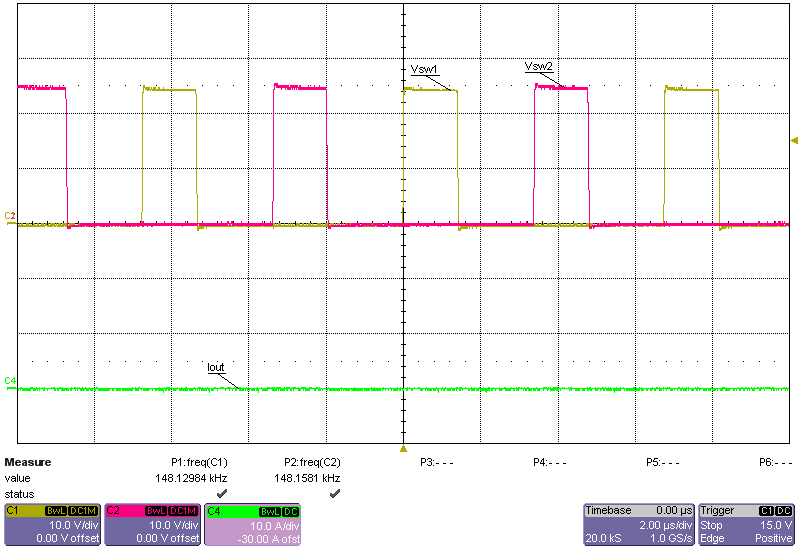 Figure 3-2 Switch Node Voltages, 24V
Input, No Load, FPWM Mode
Figure 3-2 Switch Node Voltages, 24V
Input, No Load, FPWM Mode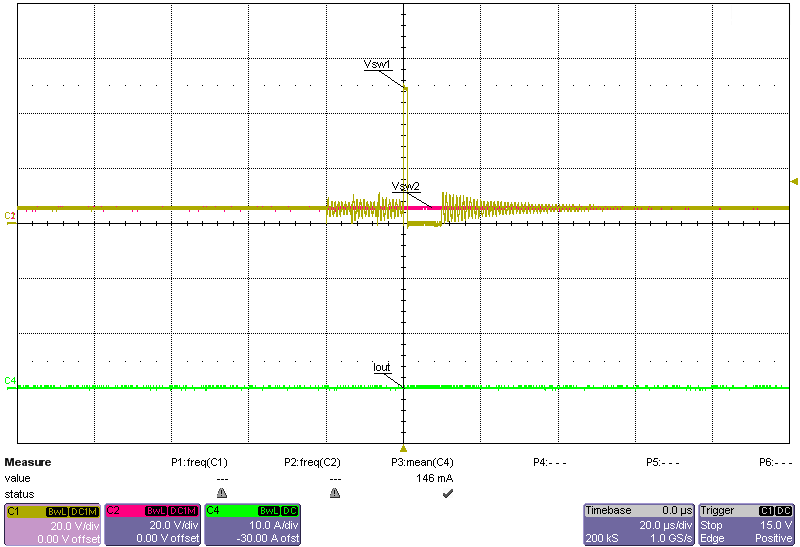 Figure 3-4 Switch Node Voltages, 48V
Input, No Load, PFM Mode
Figure 3-4 Switch Node Voltages, 48V
Input, No Load, PFM Mode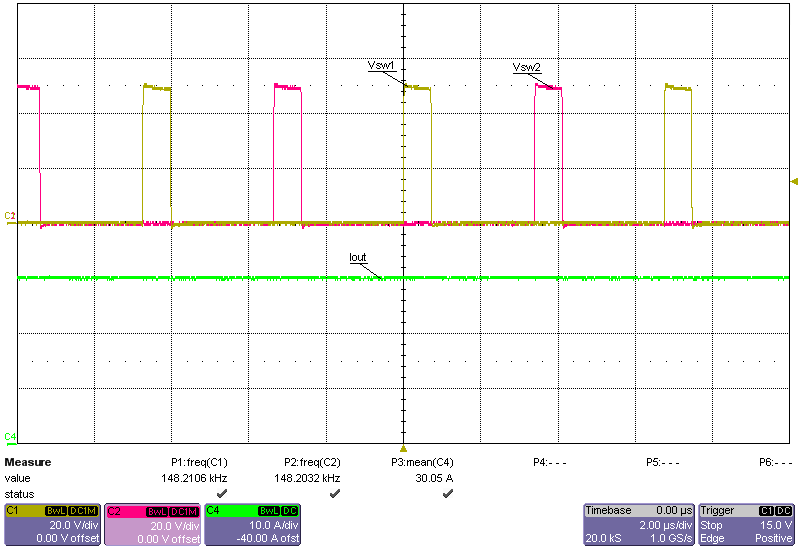 Figure 3-6 Switch Node Voltages, 48V
Input, 30A Load
Figure 3-6 Switch Node Voltages, 48V
Input, 30A Load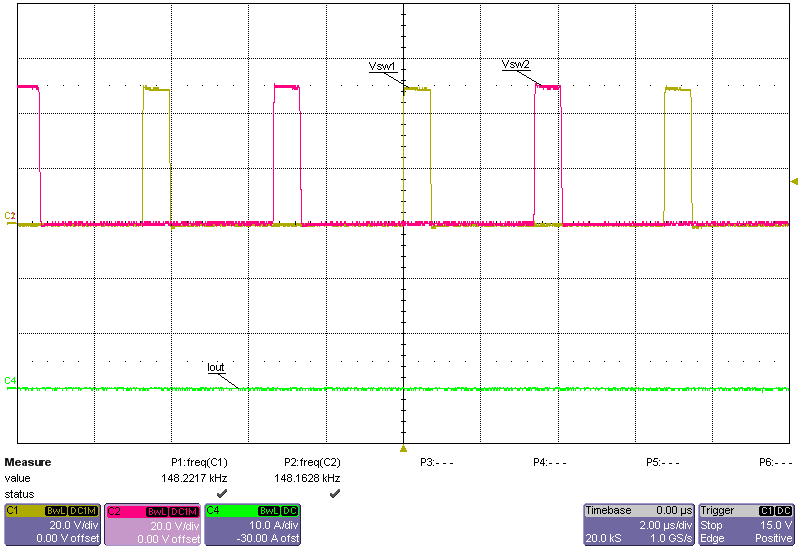 Figure 3-5 Switch Node Voltages, 48V
Input, No Load, FPWM Mode
Figure 3-5 Switch Node Voltages, 48V
Input, No Load, FPWM Mode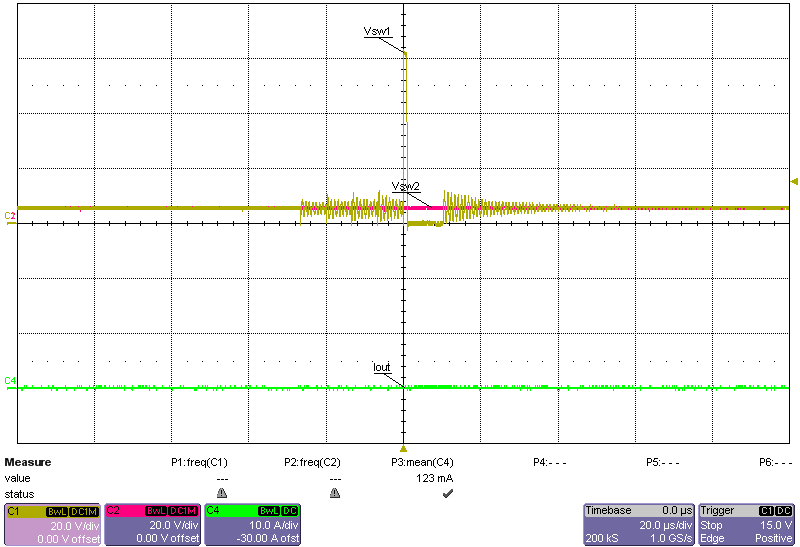 Figure 3-7 Switch Node Voltages, 60V
Input, No Load, PFM Mode
Figure 3-7 Switch Node Voltages, 60V
Input, No Load, PFM Mode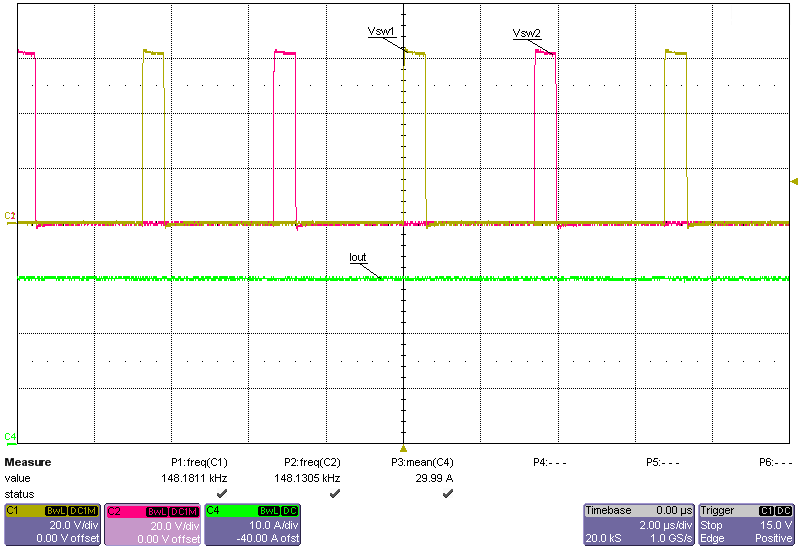 Figure 3-9 Switch Node Voltages, 60V
Input, 30A Load
Figure 3-9 Switch Node Voltages, 60V
Input, 30A Load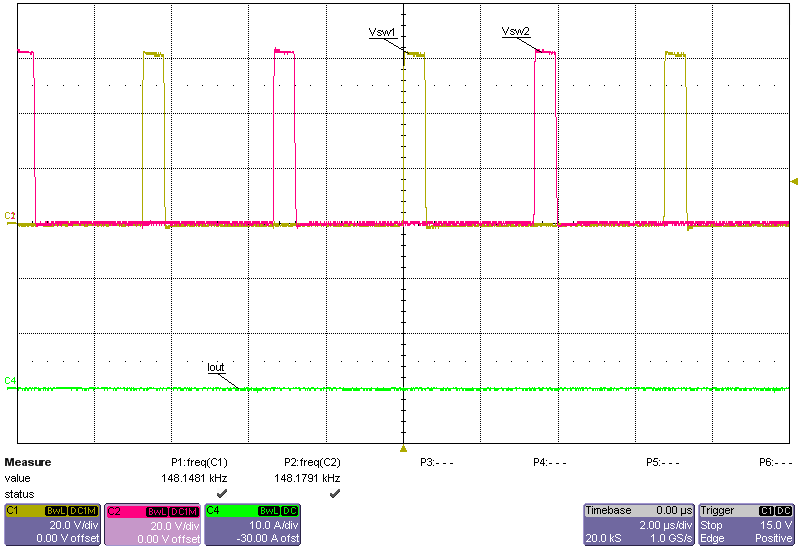 Figure 3-8 Switch Node Voltages, 60V
Input, No Load, FPWM Mode
Figure 3-8 Switch Node Voltages, 60V
Input, No Load, FPWM Mode